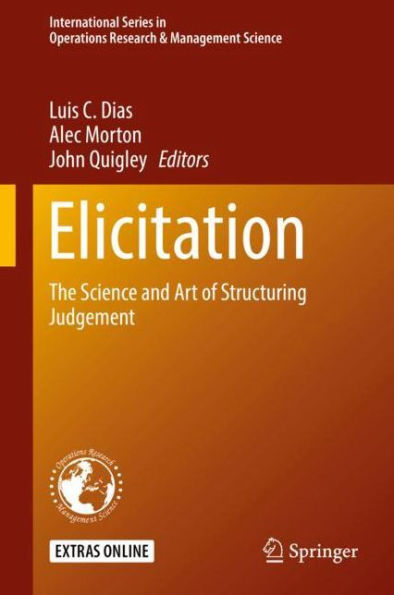Chapters 2 through 9 focus on processes to elicit uncertainty from experts, including the Classical Method for aggregating judgements from multiple experts concerning probability distributions; the issue of validation in the Classical Method; the Sheffield elicitation framework; the IDEA prool; approaches following the Bayesian perspective; themain elements of structured expert processes for dependence elicitation; and how mathematical methods can incorporate correlations between experts.
Chapters 10 through 14 focus on processes to elicit preferences from stakeholders or decision makers, including two chapters on problems under uncertainty (utility functions), and three chapters that address elicitation of preferences independently of, or in absence of, any uncertainty elicitation (value functions and ELECTRE). Two chapters then focus on cross-cutting issues for elicitation of uncertainties and elicitation of preferences: biases and selection of experts.
Finally, the last group of chapters illustrates how some of the presented approaches are applied in practice, including a food security case in the UK; expert elicitation in health care decision making; an expert judgement based method to elicit nuclear threat risks in US ports; risk assessment in a pulp and paper manufacturer in the Nordic countries; and elicitation of preferences for crop planning in a Greek region.
Chapters 2 through 9 focus on processes to elicit uncertainty from experts, including the Classical Method for aggregating judgements from multiple experts concerning probability distributions; the issue of validation in the Classical Method; the Sheffield elicitation framework; the IDEA prool; approaches following the Bayesian perspective; themain elements of structured expert processes for dependence elicitation; and how mathematical methods can incorporate correlations between experts.
Chapters 10 through 14 focus on processes to elicit preferences from stakeholders or decision makers, including two chapters on problems under uncertainty (utility functions), and three chapters that address elicitation of preferences independently of, or in absence of, any uncertainty elicitation (value functions and ELECTRE). Two chapters then focus on cross-cutting issues for elicitation of uncertainties and elicitation of preferences: biases and selection of experts.
Finally, the last group of chapters illustrates how some of the presented approaches are applied in practice, including a food security case in the UK; expert elicitation in health care decision making; an expert judgement based method to elicit nuclear threat risks in US ports; risk assessment in a pulp and paper manufacturer in the Nordic countries; and elicitation of preferences for crop planning in a Greek region.

Elicitation: The Science and Art of Structuring Judgement
542
Elicitation: The Science and Art of Structuring Judgement
542Hardcover(1st ed. 2018)

Product Details
| ISBN-13: | 9783319650517 |
|---|---|
| Publisher: | Springer International Publishing |
| Publication date: | 11/18/2017 |
| Series: | International Series in Operations Research & Management Science , #261 |
| Edition description: | 1st ed. 2018 |
| Pages: | 542 |
| Product dimensions: | 6.10(w) x 9.25(h) x (d) |
